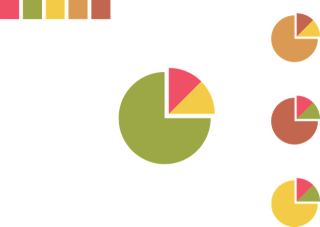
With good quality, timely management information it should be possible to define and measure some "Financial Key Performance Indicators" (KPI's) that can help you answer these questions.
KPI's can be used for a variety of purposes; tracking your business's performance against plan is perhaps the most obvious one, but they may also be used to identify emerging trends or to benchmark your business against competitors or industry standards.
There is a very wide range of KPI's from which to choose; it is therefore important to carefully select measures according to the type of business you run and your unique objectives. Our advisers can help you select and apply the right KPI's for your business. However, here is a selection of some of the most common ones:
1. Gross profit margin
Gross margin can indicate whether you are pricing your goods or services correctly. The calculation is (gross profit / sales), expressed as a percentage. Gross profits should be sufficient to cover fixed overheads and leave you with a profit.
2. Net profit margin
The net profit is the bottom line, after deducting all expenditure, including corporation tax if your business is a company. The net profit margin is calculated as (net profit / sales), expressed as a percentage. If you have a sole trade or partnership business, net profits need to be enough to cover your personal needs, with sufficient capital left in the business to fund ongoing trading.
3. Aged debtors
If your business makes sales on credit terms, track your aged debtors. This means quantifying the amount owned within and outwith normal payment terms, the objective being to minimise (or preferably eliminate) any debt that is overdue. It is commonplace to split aged debtors into amounts due in under 30 days, 30 to 60 days, and over 60/ over 90 days, though you may wish to tailor the ageing according to your own requirements.
4. Working capital
Working capital ratios provide an indication of your business's ability to pay the bills as they fall due. Perhaps the best known example is the current ratio, calculated as (current assets / current liabilities), expressed as a number. A number below 1 may strongly suggest that the business has insufficient cash to pay the bills on time.
Interpreting the KPI's requires skill and care, as the context is unique to each business. If you'd like to know more, get in touch with us today!



